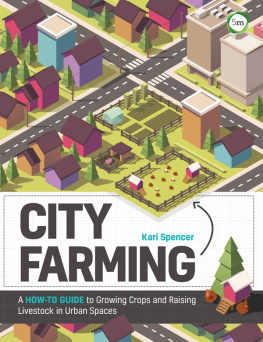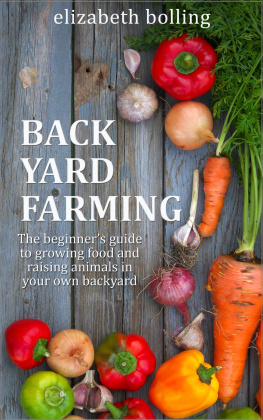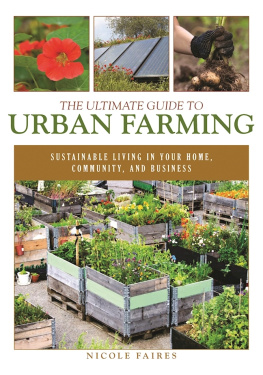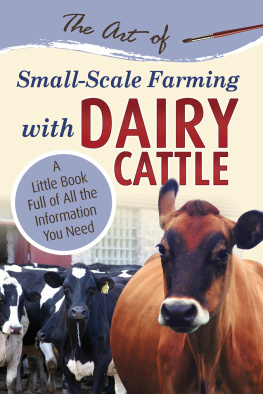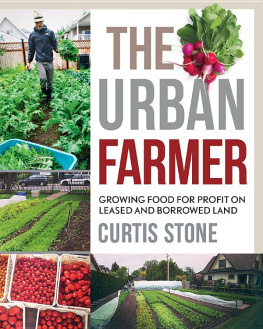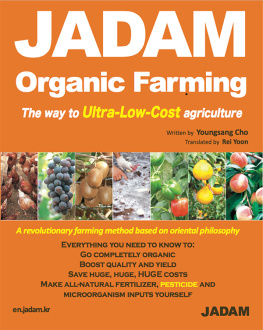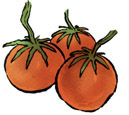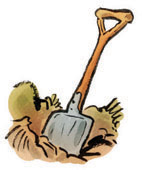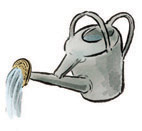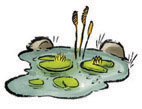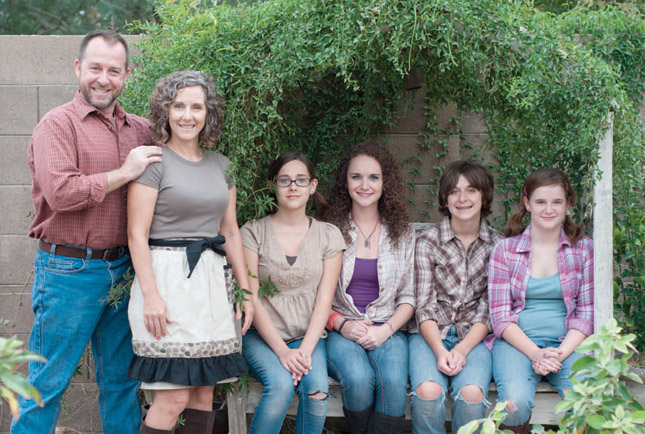First published 2017
Copyright Kari Spencer 2017
All rights reserved. No part of this publication may be reproduced, stored in a retrieval system, or transmitted, in any form or by any means, electronic, mechanical, photocopying, recording or otherwise, without prior permission of the copyright holder.
Published by
5M Publishing Ltd,
Benchmark House,
8 Smithy Wood Drive,
Sheffield, S35 1QN, UK
Tel: +44 (0) 1234 81 81 80
www.5mpublishing.com
A Catalogue record for this book is available from the British Library
ISBN 9781910455906
Book design and layout by Alex Lazarou
Printed by Replika Press Ltd, India
Photo credits
All photos by Kari Spencer except for:
Figures 1.1, 3.2, 3.4, 7.1, 7.2 and 8.1 by Dreamstime
Figure 4.6 by Laura Denyes and Wish We Had Acres
Figure 6.1 by Canva
Figure 6.5 by Jill Green and Sweet Life Garden

We are in the midst of a revolution. A peaceful one that I have dreamed of being part of since the mid-1970s when in the 8th grade I wrote a paper on how we were over-fishing the oceans. To this day, I am not really clear about HOW I knew there was a problem, just that there was something inherently wrong with how we were living on and eating from the earth.
Our revolution is a discovery of where our food comes from and what is in it. A return to the good ol days when we knew what a peach really tasted like because at its peak ripeness it dropped into our hands and we took a bite, the flavor exploding in our mouths and sending tingles to our toes. This is because we harvested it from a tree that we nurtured, adding only organic mulch, compost and natural fertilizers, making sure no dangerous chemicals were used that would travel into our food. We have grown a clean, healthy peach that tastes great, is nutrient dense and picked at its peak ripeness. This is the healthiest food we can find.
The good news is people of all ages are jumping on board and growing food in their front and backyards, on their windowsills and in community and school gardens. They are joining the trend by the millions in a discovery of what is best for their health, for the health of their community and for the world.
What is exciting for me is that this process is being led by a new breed of farmers that I affectionately call urban farmers with growing spaces ranging in size from a few pots to dozens of acres growing food within or adjacent to our cities. Over the past decade I have purposefully changed the conversation from the notion of being a gardener to one of being a farmer because gardening is thought of as a hobby and farming as a vocation. This change in perspective plants the seeds for people to begin the process of creating a career in their yards and at the same time supports and nurtures their local food system.
Becoming an urban farmer is as simple as shifting the way you think about growing food:
- First, grow food.
- Second, share it with someone, as this is what farmers do. Even if you are just sharing it with your family.
- Third, name your farm!
The first two steps are pretty straightforward but why the third? Naming your farm builds and nurtures the local food movement in ways that you may not imagine by activating the conversation around food and farming. Imagine sharing the name of your farm with your friends perhaps Jacks Bean Stalk, Lauras Roost or Glorias Golden Guild learning the name of your farm brings a smile to most peoples face and inspires the question: You are a farmer? Tell me about that.
A few years ago Kari Spencer walked into the Urban Farm Nursery and we spent an hour or so chatting. I saw the spark in her eyes as she told me about her urban farm called The Micro Farm Project. I decided then that I had to figure out how to work with her.
Our job as we create our urban farms is to build resiliency into the spaces where we work and live. Kari has a special talent for magically being able to integrate all the parts of her urban farm into one cohesive model, one that works with the flow of nature rather than against it. Her systems are able to bounce back in the face of adversity, truly demonstrating what resiliency is all about.
As you step into your urban farming adventure, learning the basic tenets of how to grow your own food and what components come together to create an urban farm are essential. Kari is brilliant when it comes to being able to articulate this. She has taken a topic that may seem new or challenging and has composted it down to simple steps that will help you navigate inventing your perfect farm. Her step-by-step, easy-to-understand process makes the discovery exciting and fun.
Because Kari has spent most of the last decade exploring and experimenting with these concepts, she has gained invaluable insights and lessons that she shares in City Farming . This book will give you the tools to create your urban farm and join the food growing revolution. I often say that things get done in the world because people take them on, committed to change their world. I challenge you to dream big, plan your farm and raise your first meal entirely from your yard.
GREG PETERSON
The Urban Farm
Phoenix Arizona
December 2016
Contents
1
EASY PEAS-Y!
Creating Real Convenience and True Abundance
2
SUNNY SIDE UP!
Optimizing Sunlight and Temperature On Your Farm
3
SOAK IT UP!
Watering to Promote Vigorous Plants, Healthy Animals and a Flourishing Environment
4
A TIME FOR EVERYTHING
Gardening Through the Changing Seasons
5
MAKE ROOM FOR ABUNDANCE
Utilizing Urban Spaces Efficiently to Grow and Do More
6
SOIL
The Gardeners Most Valuable Resource, Right Under Our Feet
7
IN WITH THE NEW
Propagating Plants and Breeding Livestock
8
TWO STEPS BACK
How to Overcome Setbacks from Pests, Diseases and Toxic Chemicals
9
TAKING THE LONG VIEW
Going Beyond Sustainability on the Farm
10
THE TIES THAT BIND
Growing Community While You Grow Your Farm
11
WE END AT THE BEGINNING
Guide

